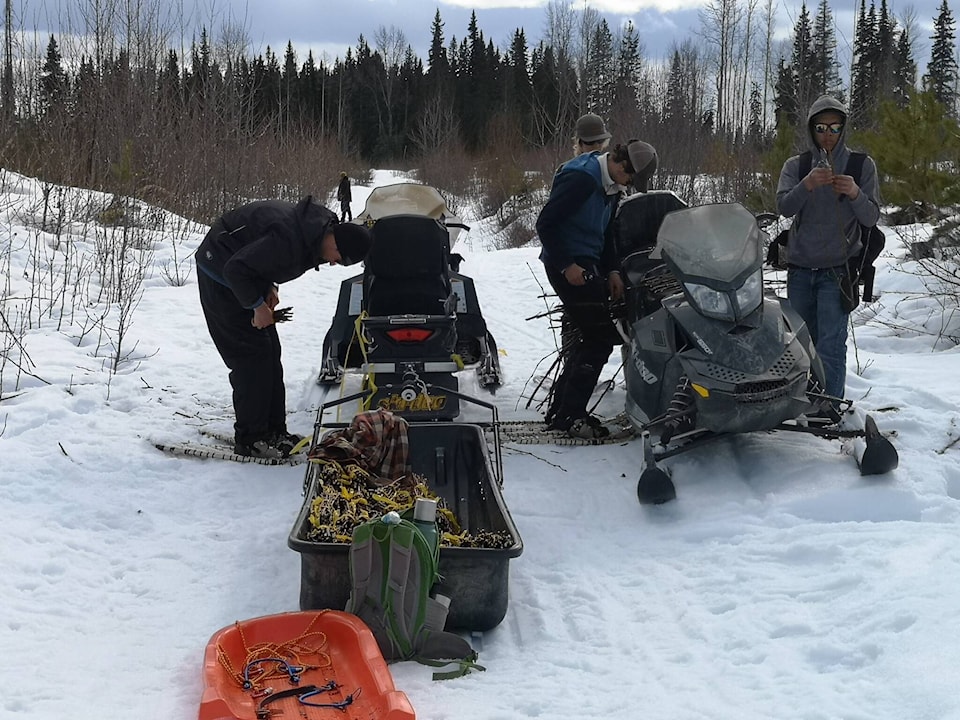A plan first drafted a decade ago and then modified over the years has now resulted in a buffer around the village of Granisle to better safeguard it against a forest fire.
“You can’t really eliminate the risk of a fire, but what you can do is create a buffer, something that will slow a fire down to give citizens a chance to evacuate and authorities a chance to put in fire suppression,” said Peter Tweedie, the general manager of the Babine Lake Community Forest which did the work.
Crews first cleared a 650 metre-wide swath of conifers, which are more prone to fire, and replanted with mostly birch and some willow trees, deciduous species which tend to create a more humid environment around them and are less susceptible to fire.
Depending upon the street layout in Granisle, clearing took place right up to the property lines of residents.
The final plan, as modified from the original, also brought in different elements of evolving forest practices and fibre use, said Tweedie.
Logging waste once trees were cut that might otherwise have been burned was reduced by having it ground into chips at the project site by the Drax pellet plant in Burns Lake.
“We didn’t make any money off of that,” said Tweedie of the chips. “They paid the stumpage [on the fibre] and took it away. It was good not to have it burned.”
In all, 8,000 cubic metres of chips were generated, enough to fill approximately 200 trucks.
The Babine Lake Community Forest was able to earn money by selling sawlogs, 36,500 cubic metres worth or enough for 665 trucks to Hampton Forest Products in Burns Lake.
Tweedie said village meetings were also held to keep residents up to date on the work involved. Residents also had, and continue to have, access to firewood from logs decked at a central location.
Crews did have to burn a certain amount of waste and that created smoke, something that Tweedie said was inevitable and relayed at community meetings. He said there were three complaints made on days when burning did take place.
Plans to burn in 2020 produced mixed results that year because of high rainfall with burning then shifted to 2021.
Tweedie said the community forest worked closely with BC Wildfire Service in designing the buffer zone and overall emphasis on reducing fire risk.
Planning accelerated about five years ago when the Granisle council, realizing it didn’t have the capacity to undertake a project like this all by itself, engaged the community forest. It owns half of the community forest and the other half is owned by the Lake Babine Nation.
An application was then made to the provincial government’s Forest Enhancement Society of B.C. and it provided a $401,450 grant, a sum Tweedie said was crucial.
“There were a lot of aspects to this project that were unique, not typical forestry work,” he added.
Granisle mayor Linda McGuire also touched on the enhancement society grant, saying it would have been extremely challenging for the village to do the work otherwise.
There’s even been an effect on the community forest itself because the buffer zone is within its harvest area.
“So what we effectively did was was to reduce our size,” Tweedie said.
There will be a benefit, however, in the future as the community forest will be able to harvest the birch it has planted and increase the variety of species it has to sell.
